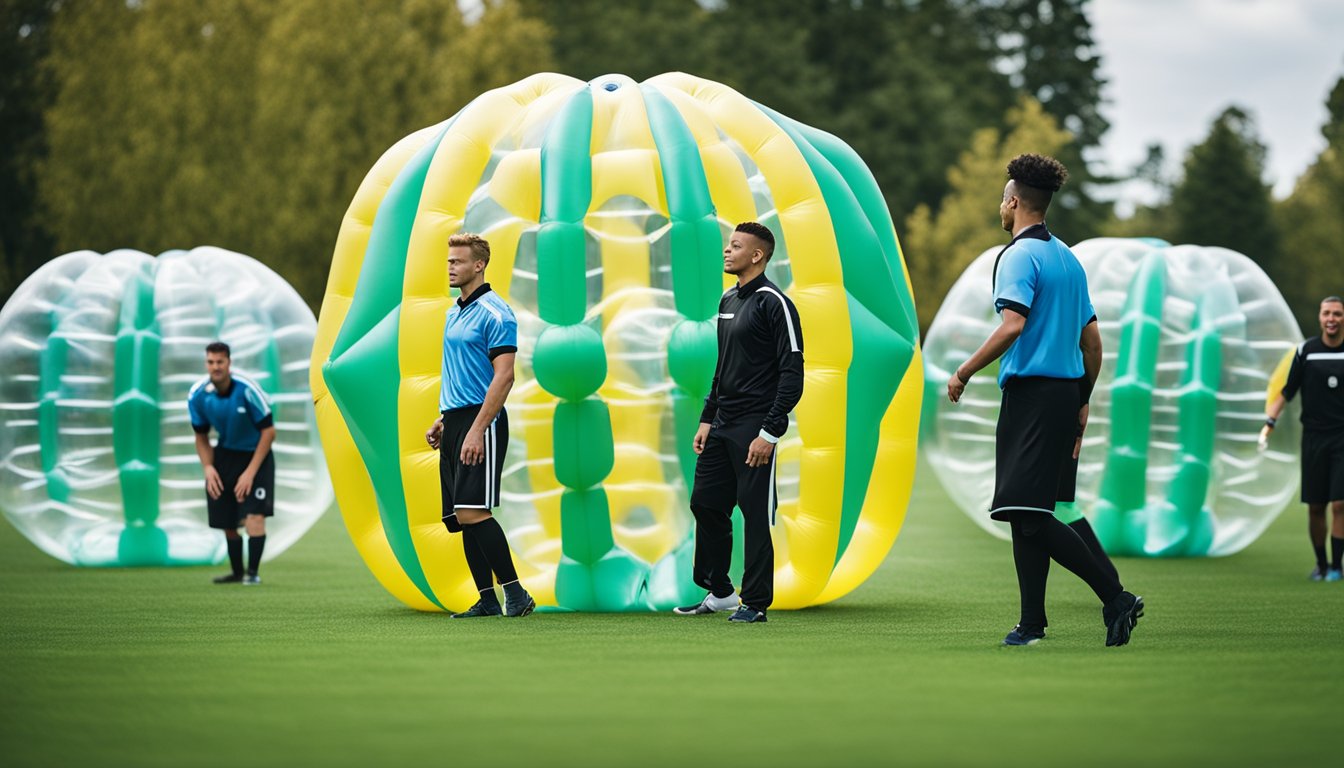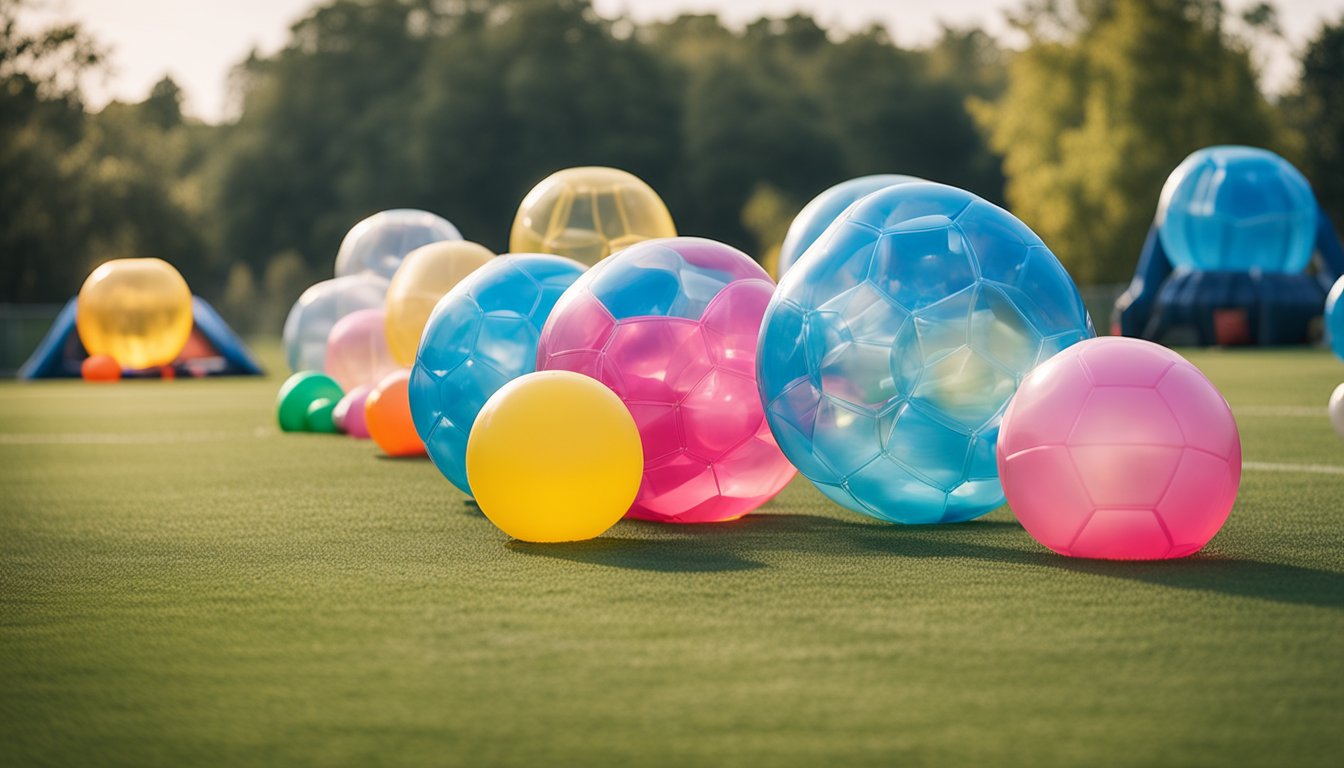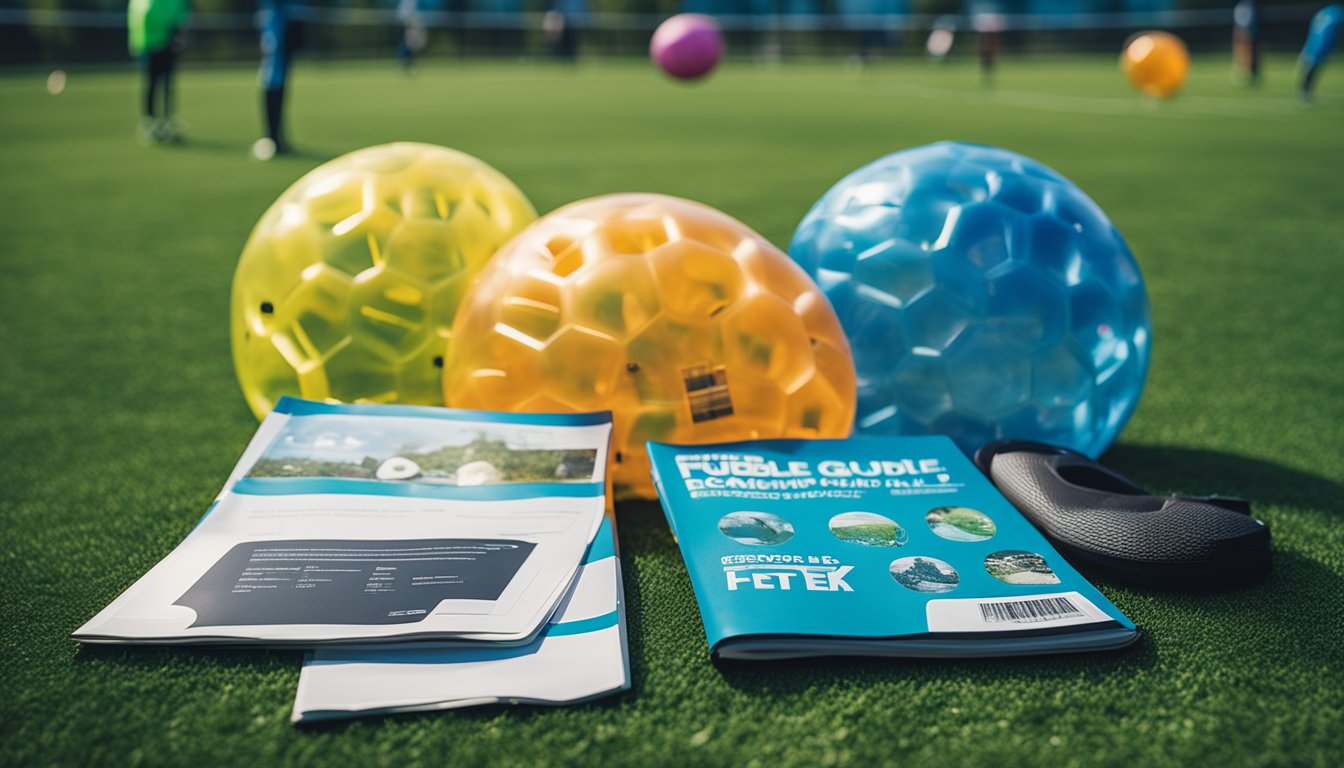Late updated: 03 Oct 2024 12:10
Written by: Emma Saunders
Beginner's Guide To Bubble Football Equipment: Essential Gear and Tips
Bubble football, a delightful twist on the traditional sport, offers a vibrant and engaging way for both novices and seasoned players to enjoy a team sport with a splash of novelty. As the name suggests, players are encased in large, inflatable zorb suits, transforming the sport into a bouncing spectacle of fun and energy. For beginners venturing into bubble football, equipping oneself with the right gear is imperative. The most essential piece of equipment is the bubble suit, designed to envelop the player's upper body, ensuring both safety and uninhibited fun.

While different from conventional football gear, bubble football equipment prioritises safety and mobility. Athletic clothing paired with sturdy trainers is recommended to ensure ease of movement during play. Another aspect worth noting is how the inflatable suit cushions impacts, significantly reducing the risk of injury. This feature makes bubble football not only exhilarating but also a safe option for people of various ages seeking enjoyment in sports.
The cultural phenomenon of bubble football has rapidly gained popularity as a fun and quirky alternative to traditional games. It combines athleticism with laughter, making it an appealing sport for anyone looking to break from routine. Understanding the basic equipment can transform a curious novice into a confident player ready to embrace the unpredictable, joyous chaos of this unique activity.
Key Takeaways
- Essential bubble football gear includes an inflatable suit for safety.
- Proper athletic clothing and trainers enhance mobility.
- Understanding the basics helps beginners enjoy this dynamic sport.
Understanding the Basics of Bubble Football
In bubble football, players wear inflatable suits, adding a twist to the traditional game. Safety is emphasised alongside teamwork and strategic movement. Understanding the field setup, positions, and rules is essential for a successful match.
The Field and Essential Equipment
Bubble football takes place on a standard football field, adjusted for a typically smaller play area. Essential equipment includes the inflatable bubble suits worn by players. These suits cover the upper body and head, leaving the legs free for movement.
Proper footwear, often football boots, ensures grip on various surfaces. Goalposts are similar to those in regular football, and the game is played with a standard football. Safety gear like mouthguards can be used, but the bubble itself offers primary protection. Communication devices are rare, so teamwork and vocal signals are key as players might find their visibility and hearing slightly restricted by the bubble.
Key Positions and Roles
In bubble football, the teams usually consist of five to seven players per side, but here, role definitions differ from conventional football. The most visible positions are often grouped into attackers and defenders.
Attackers focus on manoeuvring the ball toward the opposing team's goal. Defenders aim to block their opponents' attempts to score. Unlike conventional football, traditional roles like offensive linemen or running back are not predefined, and flexibility is crucial.
Players must communicate effectively with teammates to coordinate strategies. The bouncy nature of the sport demands adaptability and quick thinking. This leads to dynamic shifts in positions during play, and teamwork is vital for successful gameplay.
Fundamental Rules and Scoring
Bubble football integrates some rules of traditional football with additional safety considerations. Players must remain encased in the bubble suit throughout the game. Touchdowns are scored by getting the ball over the opposing goal line, similar to a standard football goal.
Safety rules prohibit actions like hitting from behind or lifting the bubble. The scoring includes goals but lacks complex scoring systems found in variants like field goals or extra points. The absence of strict positions allows for a fluid game, making it both fun and challenging. Communication and strategy become key as the emphasis is on enjoyment and light-hearted competition rather than rigid adherence to rules.
Gear and Safety Considerations

In bubble football, the right equipment and safety precautions are essential for both enjoyment and injury prevention. This section discusses how to select appropriate gear and maintain safety while playing.
Choosing the Right Equipment
Selecting the correct gear is crucial in bubble football. Helmets and facial protection are vital to reduce head injury risk. When choosing a helmet, ensure proper sizing and fitting. Helmets should sit squarely on the head without shifting.
Proper pads, like shoulder pads and knee pads, safeguard against impact. Ensuring pads fit well is essential for mobility and protection. While not as bulk-heavy as American football pads, these help cushion any falls or collisions.
Footwear is another important consideration. Cleats that provide good traction on grass or indoor surfaces prevent falls and slips. Avoid overly stiff cleats, as flexible soles assist quick movements. Some players prefer lightweight gloves for added grip and to shield hands.
Brand preferences can vary, but safety certifications are key. Be mindful of each piece's comfort and functionality. Quality brands often deliver better durability, though budget-friendly options are plentiful.
Playing Safely and Preventing Injuries
To minimise injuries, emphasis on tackling technique and positioning is crucial. Bubble football reduces some risks present in conventional American football, but caution is still needed.
Wearing a jockstrap can prevent groin injuries while maintaining mobility. Awareness of one another's positions helps avoid high-impact collisions, focusing instead on strategic rolling and bouncing.
Incorporating brief safety drills can solidify good practices. Stretching before play loosens muscles, reducing injury odds. Equipment checks should confirm all gear is secured properly.
Condition of the play area also affects safety. Use a flat, debris-free field for outdoor matches. Indoor pitches should be smooth and free of obstacles. When everyone prioritises safety, matches become enjoyable and less prone to mishaps.
Frequently Asked Questions

In bubble football, safety and equipment are paramount for an enjoyable game experience. Questions often centre around necessary protective gear, adherence to safety protocols, participant requirements, and practical aspects of organising a match.
What protective gear is required to play bubble football?
Participants must wear sturdy bubble suits that cover the upper body, head, and arms. This primary protective gear is essential. In addition, comfortable athletic wear and closed-toe sports shoes are recommended for added protection and agility on the field.
What are the safety measures to consider in bubble football?
Ensuring a safe play environment involves checking that bubble suits are properly inflated and securely attached. Game referees should be present to enforce rules and handle any injuries. Playing on a soft, flat surface helps minimise impact risks.
What is the maximum weight allowance for participants in bubble football?
Typically, bubble football suits are designed to accommodate participants up to 100 kilograms. It's important to confirm weight restrictions with the equipment provider, as limits can vary depending on suit materials and manufacturer specifications.
How does one organise a bubble football match?
Organising a match involves securing an appropriate venue, renting bubble suits, and setting up teams, usually of 5 to 7 players. Facilitating a referee or game supervisor enhances fair play. Booking in advance is advisable to ensure availability.
What is the average price range for hiring bubble football equipment?
The cost for hiring bubble football gear can vary. On average, prices range from £200 to £500 per session, depending on the number of suits, duration of the game, and any additional services such as refereeing provided.
Are there age restrictions when playing bubble football?
Age restrictions often apply; most providers set a minimum age of around 10 years. This is to ensure that participants can comfortably fit into the suits and follow instructions. Always check specific age policies with the equipment provider.
